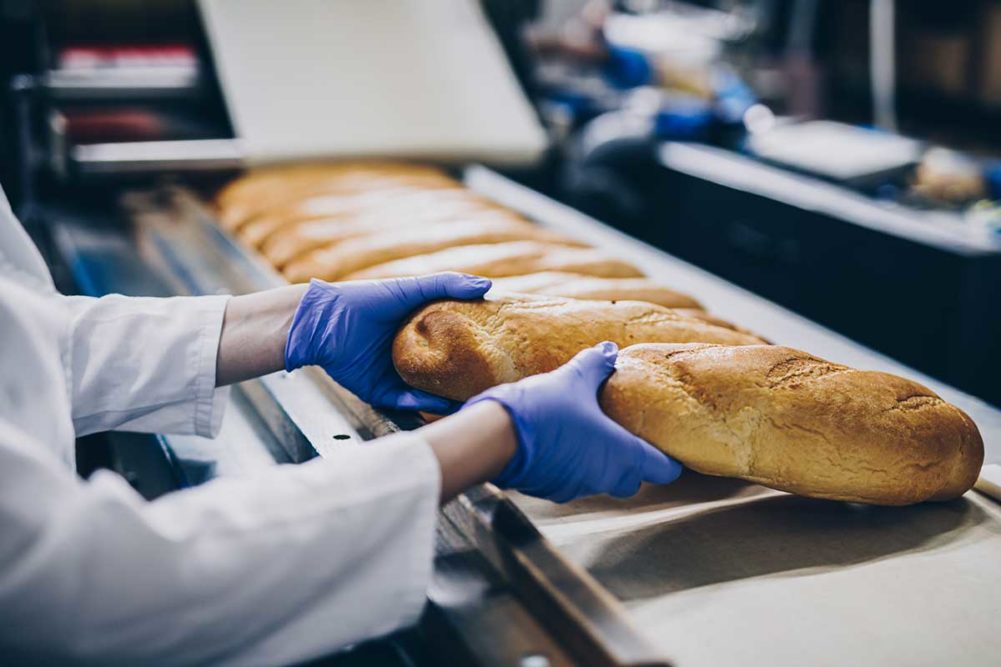Snack makers are feasting on perhaps the biggest labor-saving innovation that involves the automation of variety packs. In the past, it often took an assembly line of a dozen people or more spending hours repetitively picking and placing bags to create them.
“During the last two years, the requests for automating variety packs have exploded,” said Jason Hogue, southeast sales manager, BluePrint Automation (BPA). “On a monthly basis, I get more requests for variety packs than anything else.”
Now there are options that make the process much less laborious. BPA offers a popular system where snack producers initially fill large containers of single-serve packs of snacks and store them until they’re ready to create variety packs.
Then, Mr. Hogue said, they just dump the contents of the entire container into the BPA feeder. The system singulates those bags into a single-file line that conveys them to a robot, a gatekeeper, a simple drop gate or even to a human to load multiple flavors into a box or bag.
Julia Casey, chief marketing officer, TNA Solutions, noted automation of a complicated variety pack requires significant planning and project management upfront before any investments are made.
“When feeding primary bags to a variety pack, snack producers need to ensure that all primary bagmakers can maintain the same output as each other on the line with a different mix of product flavors requiring a strict percentage split in the variety pack,” she said. “You cannot have stations on the primary line running faster or slower than each other.”
To ensure the output of primary bagmakers are feeding a variety pack line at an even rate, snack producers must coordinate the flow of packages.
“When the TNA robags are set in motion, they are automatically tuning themselves to achieve a target of 100% efficiency constantly,” she said.
Packaging innovation today now includes flexible packaging systems that can handle a wide variety of packaging types, sizes and formats.
Ms. Casey said TNA collaborates with packaging film makers and snack producers who must switch to new materials from different suppliers because of supply disruptions or because they’re offering consumers more sustainable options.
Heat and Control’s ACP 701 automatic case packer can handle taped cases with a top and bottom seal or push lock/slat lock cases with a locking bottom and top that allows them to be reused, noted Jeff Almond, industry manager, snack food packaging.
“Some snack customers have a direct-store delivery supply system and want to reuse cases, so we have the ability to take those cases back,” he said. “The machine is robust enough to handle cases that do five or six or seven turns.”
Schubert offers more versatile robotic systems that provide multitasking.
“Now we can deploy flexible lines where we can denest a tray, load products into trays using vision-based, pick-and-place robots, and flow wrap the trays seamlessly,” said Julian Conway, sales account manager, Schubert North America. “Now you have one standalone piece of equipment that has flexibility and can do up to three different operations in one.”
He added that other applications may combine pile packs of cookies, for example, and a U-board paper packaging. Cookies also can be stacked on edge instead of in a pile pack on the same system while tray- or carton-loading is also available.
“You have a machine with tremendous flexibility and the ability to replace three different units,” Mr. Conway said. “You’re saving floor space, operator interface and different pieces of equipment because now you have one piece of machinery with one HMI and one operator.”
For flexible packaging formats, Syntegon features an intelligent direct handling (IDH) system that moves products from one belt to another with up to 30 cycles a minute.
With average process speeds of 800 products a minute, the company said, cookies or crackers don’t need to be perfectly arranged because multiple IDH arms with gentle picker suction units adapt flexibly.
Pile products can be loaded directly into trays or flowwraps and slugs are pre-portioned gently before being placed into a tray or infeed, the company noted.
This article is an excerpt from the December 2022 issue of Baking & Snack. To read the entire feature on Packaging Innovations, click here.





